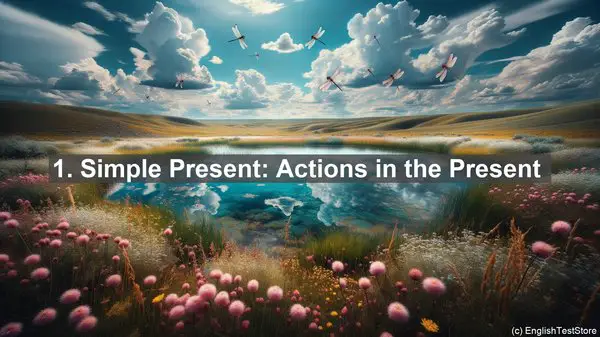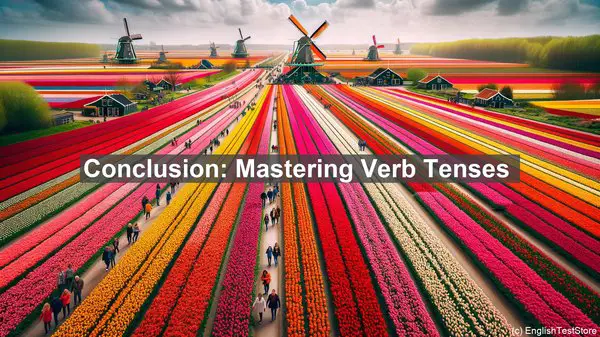Introduction: The Importance of Verb Tenses
Welcome to today’s lesson on verb tenses. As you know, verbs are the backbone of any sentence, and understanding their tenses is crucial for effective communication. Whether you’re writing an essay or having a conversation, using the correct tense ensures clarity and precision.

1. Simple Present: Actions in the Present
The simple present tense is used to describe actions that are habitual, general truths, or events in the present. For example, ‘I play tennis every Sunday’ or ‘The sun rises in the east.’ It’s important to note that the third-person singular form usually takes an ‘s’ at the end, like ‘He plays the guitar.’
2. Present Continuous: Actions Happening Now
The present continuous tense is used to describe actions that are happening at the moment of speaking. For example, ‘I am studying for my exam’ or ‘She is cooking dinner.’ It’s formed by using the present tense of ‘to be’ (am, is, are) and adding the present participle (-ing) of the main verb.
3. Simple Past: Actions in the Past
The simple past tense is used to describe actions that happened and were completed in the past. For example, ‘I visited Paris last summer’ or ‘They studied English in college.’ Regular verbs form the past tense by adding ‘ed’ to the base form, while irregular verbs have specific forms, like ‘go’ becoming ‘went.’
4. Past Continuous: Actions in Progress in the Past
The past continuous tense is used to describe actions that were in progress at a specific time in the past. For example, ‘I was reading a book when the phone rang’ or ‘They were having dinner at 8 PM.’ It’s formed by using the past tense of ‘to be’ (was, were) and adding the present participle (-ing) of the main verb.
5. Present Perfect: Actions with Relevance to the Present
The present perfect tense is used to describe actions that happened in the past but have a connection to the present. For example, ‘I have visited Rome, so I know the city well’ or ‘She has written three books in her career.’ It’s formed by using ‘have’ or ‘has’ (depending on the subject) and the past participle of the main verb.

6. Present Perfect Continuous: Actions Started in the Past and Still Ongoing
The present perfect continuous tense is used to describe actions that started in the past and are still ongoing. For example, ‘I have been studying for three hours’ or ‘She has been working on the project all week.’ It’s formed by using ‘have been’ or ‘has been’ (depending on the subject), the present participle (-ing) of ‘be,’ and the main verb’s present participle.
7. Simple Future: Actions in the Future
The simple future tense is used to describe actions that will happen in the future. For example, ‘I will call you tomorrow’ or ‘They will arrive at 9 AM.’ It’s formed by using ‘will’ or ‘shall’ (in some cases) and the base form of the main verb.
8. Future Continuous: Actions in Progress in the Future
The future continuous tense is used to describe actions that will be in progress at a specific time in the future. For example, ‘I will be studying at 8 PM tomorrow’ or ‘They will be traveling next month.’ It’s formed by using ‘will be’ or ‘shall be’ (in some cases), the present participle (-ing) of ‘be,’ and the main verb’s base form.
9. Future Perfect: Actions Completed in the Future
The future perfect tense is used to describe actions that will be completed before a specific time in the future. For example, ‘I will have finished the report by Friday’ or ‘She will have graduated by next year.’ It’s formed by using ‘will have’ or ‘shall have’ (in some cases) and the past participle of the main verb.
10. Future Perfect Continuous: Actions Ongoing and Completed in the Future
The future perfect continuous tense is used to describe actions that will be ongoing and completed before a specific time in the future. For example, ‘I will have been working here for five years by 2023’ or ‘They will have been living in the city for a decade by next month.’ It’s formed by using ‘will have been’ or ‘shall have been’ (in some cases), the present participle (-ing) of ‘be,’ and the main verb’s present participle.

